Will Greenock's 'sleeping giant' ever be awoken?
- Published
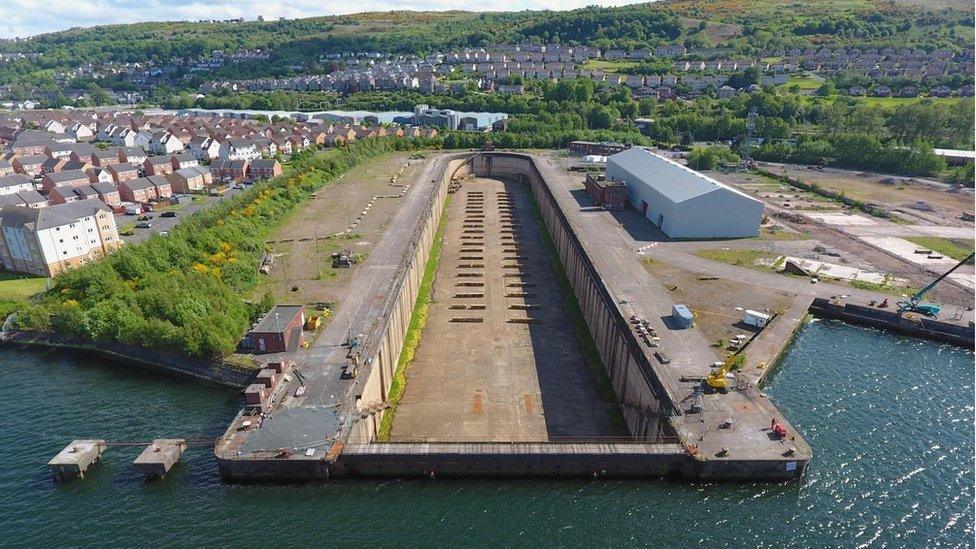
Inchgreen dry dock remains one of largest in the UK but has been little used in two decades
On the south bank of the River Clyde at Greenock a large hole in the ground provokes a lot of fiery debate.
At first glance the enormous Inchgreen dry dock looks like a relic of the Inverclyde town's shipbuilding past.
But to a determined band of campaigners it is a neglected national asset, underused for two decades, with potential to create skilled, well-paid jobs in a town that desperately needs them.
On the opposite side of the argument is an owner which claims that is precisely what it is trying to do.
There is little meeting of minds between them.
When it opened in 1964, Inchgreen was one of the world's largest dry docks - narrow basins which can be flooded so ships can enter, then drained to allow work to be done.
Among the early visitors to the "Big Dock" were giant supertankers and the Cunard liner Queen Elizabeth (they cut a notch at one end of the dock so the ship could fit).
In November 1968, thousands watched as the recently-launched QE2 - with a young Prince Charles on board - made the 13-mile journey from Clydebank and glided through the dock gates for its fitting out work (incurring a 3ft gash to its paintwork as it was caught by a sudden gust).
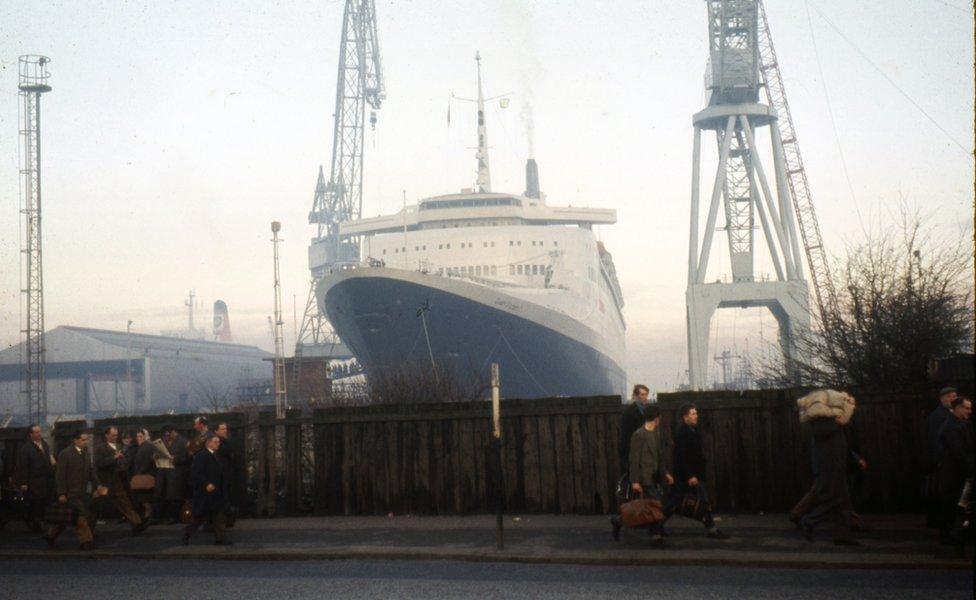
The QE2 was fitted out at Inchgreen after its launch in 1968
The dock looks very different today - empty with its cranes demolished - but it has loyal friends who maintain there is nothing inevitable about its demise.
To build such a facility from scratch, they say, would now cost a billion pounds. With investment and a strategic vision, they argue, the "sleeping giant" could be still woken.
"There's a worldwide boom in shipbuilding right now - and shortage of repair facilities for large vessels," says former shipyard worker Robert Buirds, the driving force behind the Campaign To Save Inchgreen Dry Dock.
"The few dry docks we have are often fully-booked and we're sending ferries for repair down to Merseyside."
Private ownership
At the heart of the often ill-tempered Inchgreen debate is the question of ownership.
As the Clyde's heavy industries declined in the late 20th Century huge tracts of land and assets were gathered together into a publicly-owned body named Clydeport, which was later privatised under John Major's Conservative government.
Eleven years later Clydeport was bought for £184m by Peel Ports - linked to the huge Peel group of property and infrastructure companies whose interests have included shopping centres, housing developments, ports, windfarms, regional airports and shipyards in Merseyside and Teeside.
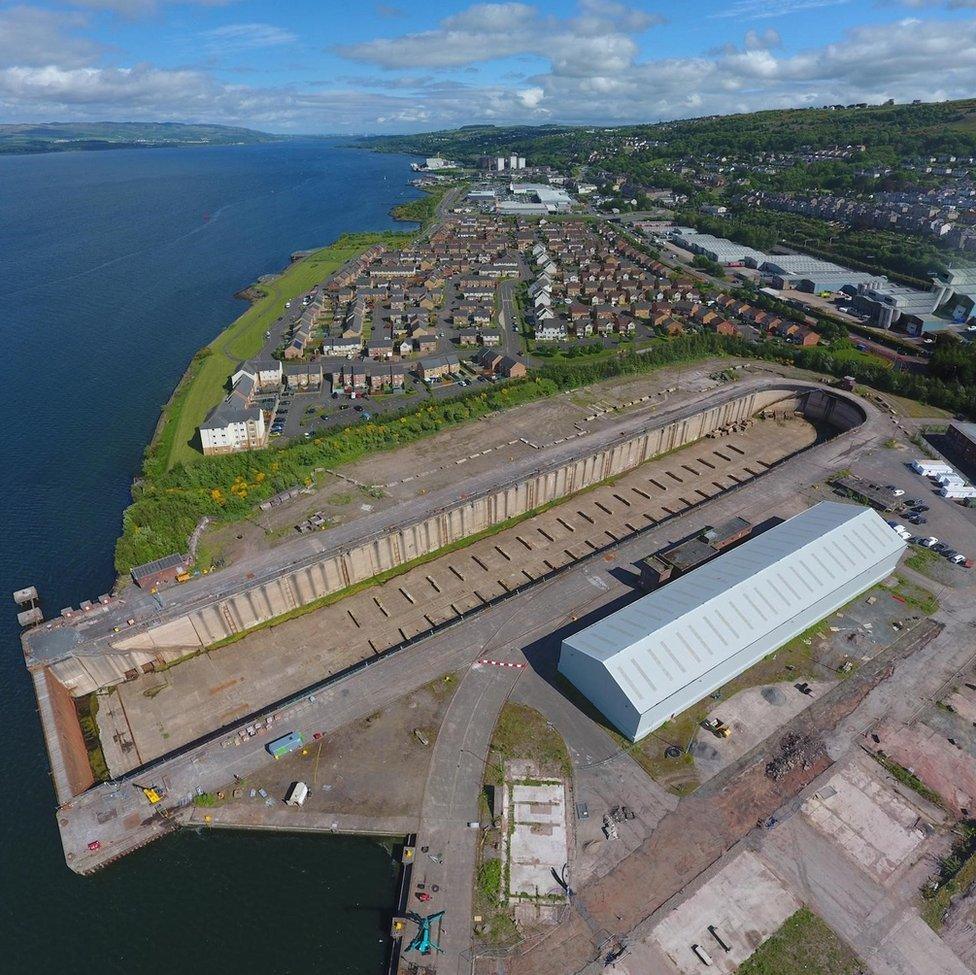
Inchgreen is just a short distance downriver from Ferguson shipyard, visible at the top of this photo
Glasgow MSP Paul Sweeney, who also convenes the Scottish Parliament cross-party group on shipbuilding, believes a growing market for cruise ship refit and repair work could offer a viable future for Inchgreen.
But he is among those who think there is little incentive for Peel to develop assets in Scotland because its main focus is on its port and shipbuilding interests south of the border.
"They've never really demonstrated why they're not using it for ship repair work or facilitating it, despite it being the largest mainland graving dock in Britain," he said.
Amid growing frustration, more than 1,400 people have now petitioned the Scottish Parliament, external to take Clydeport back into public ownership, a scenario already rejected by the Scottish government.
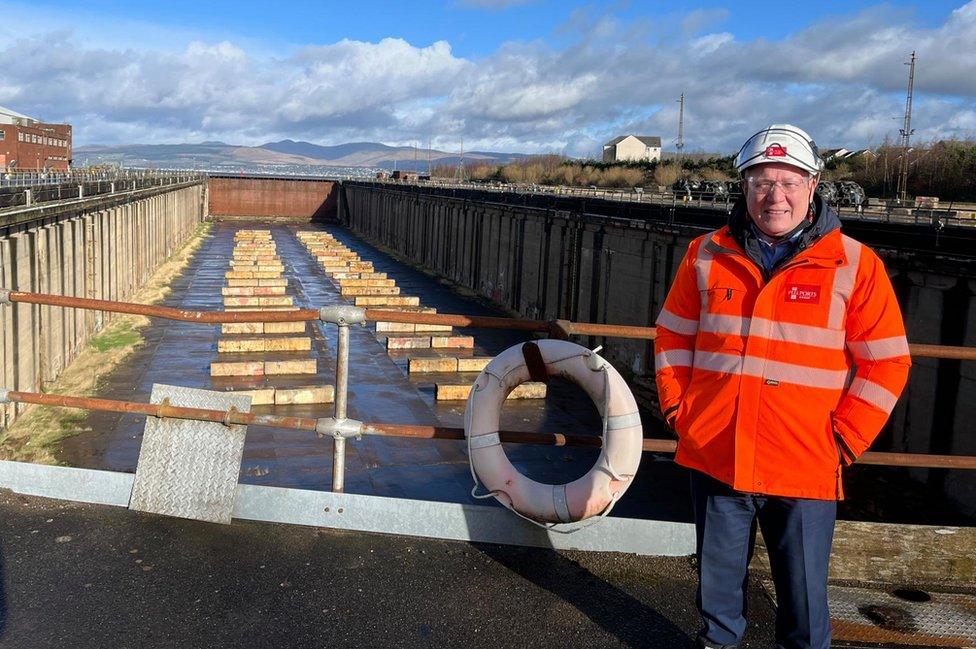
Jim McSporran says the dry dock will benefit from the new marine park plans
On the other side of the debate stands Jim McSporran, port director for Clydeport, who insists he is working "behind the scenes" to attract heavy industry and skilled jobs - the very things that the campaigners so desire.
Clydeport, wholly-owned by Peel Ports, is currently involved in a joint venture with Inverclyde Council, funded by £10m of City Deal money, to create the Inchgreen Marine Park. The quayside has been upgraded, new roads built and heavy load bearing concrete laid.
"We could fill this place with Screwfix-type businesses but we're not going to do that. It's for marine-based industry," he promises.
Ongoing talks with renewable energy firms could create "many hundreds of jobs" while shipbuilding is also a possibility, tapping into the market for wind farm support vessels, he says.
A previous plan to bring old ships for dismantling at Inchgreen came to nothing but the Clydeport boss believes it is a lucrative market that should not be sneered at.
The campaigners remain doggedly sceptical. They say Inchgreen deserves better than becoming a scrapyard, and they point out that the dry dock itself has been excluded from the marine park project. Their suspicion is that Peel wants to keep a tight rein on who gets to use it.
Jim McSporran insists there is "no ulterior motive". The dock will benefit and new investment is planned, he says.
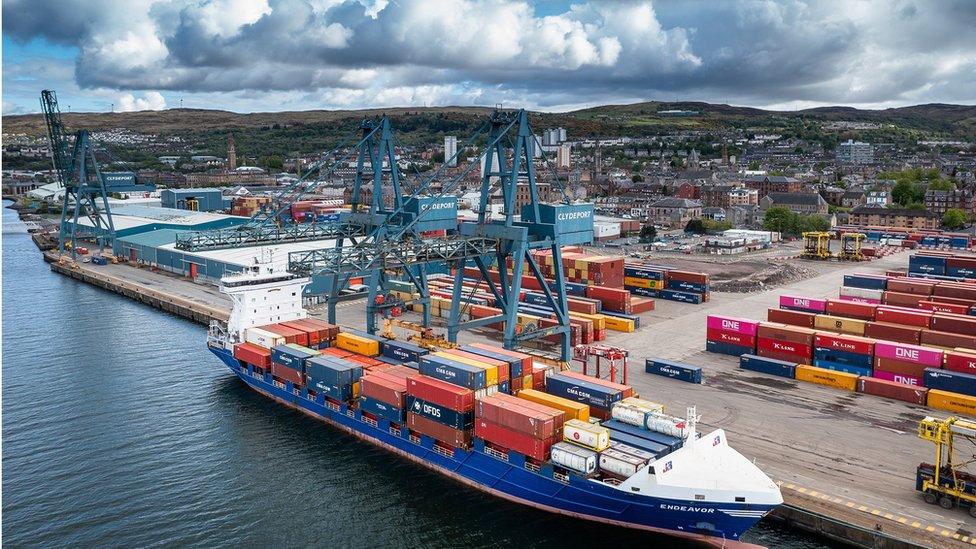
Peel Ports says it has invested £80m in its Clyde assets in recent years, including Greenock's container terminal
Peel Ports is a thriving company, posting nearly £400m in pre-tax profits last year, largely driven by its assets south of the border including the huge Liverpool 2 container terminal. Its biggest shareholder, the Peel Group, is one of the UK's largest property companies.
Claims that it is stifling investment on the Clyde or too reliant on partnerships involving public money are strongly contested.
In the last three years alone, the firm says, about £80m has been invested in projects such as reinventing the former coal and iron ore terminal at Hunterston in Ayrshire and improving the shipping container/cruise liner facilities at Greenock's Ocean Terminal.
Inverclyde's local politicians - often the target of criticism from the Save Inchgreen campaigners - insist they are also working hard to attract new jobs and businesses.
Council leader Stephen McCabe, who chairs the Inchgreen Marine Park joint venture, says he understands the campaigners' frustration but feels there is a need for pragmatism.
"They don't trust Peel, they want Peel out of the dry dock, they want Peel out of the Clyde - but that's not going to happen," he says.
"So we need to work with Peel. We are trying to actively work with them to secure jobs for Inchgreen and Inverclyde."
The different viewpoints often erupt into feisty exchanges on social media or in the letters pages of the Greenock Telegraph, the local newspaper which has itself demanded answers and action, external over Inchgreen.
Inverclyde has lost 1,200 jobs in the past 18 months - so promises of new business will be monitored closely.
The "big dock" is now on the market for lease once again. The owners say they have held talks with several interested parties.
But for the time being at least, the giant sleeps on.